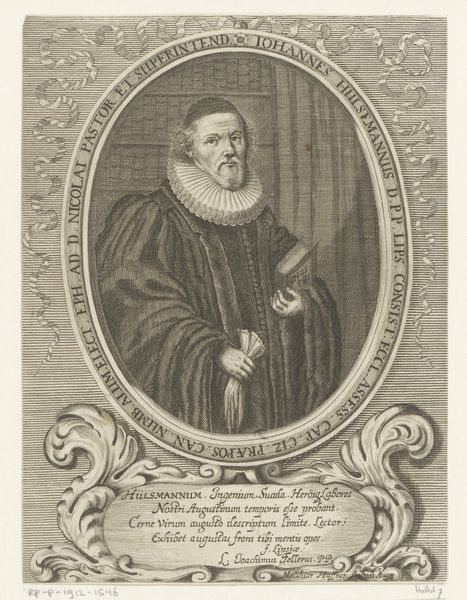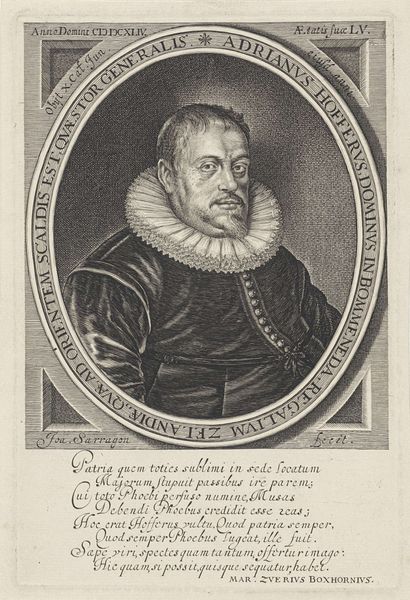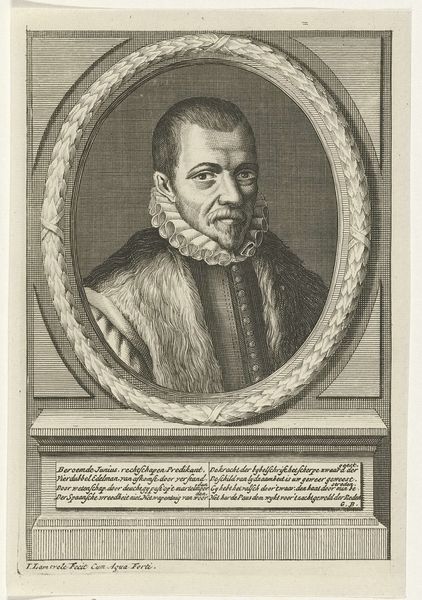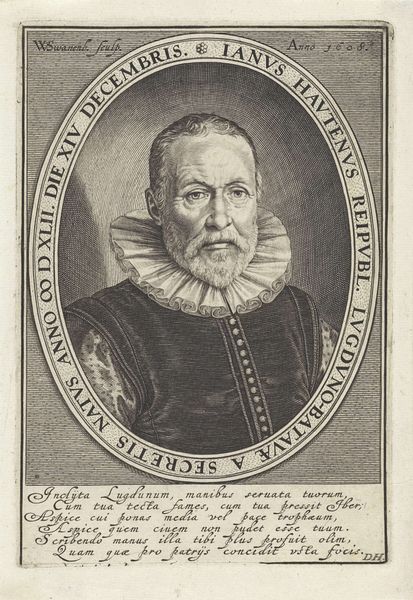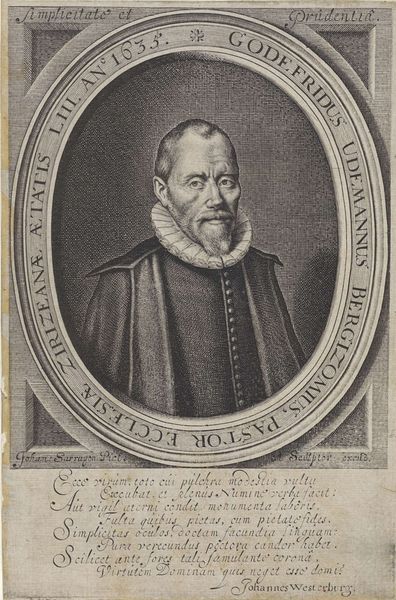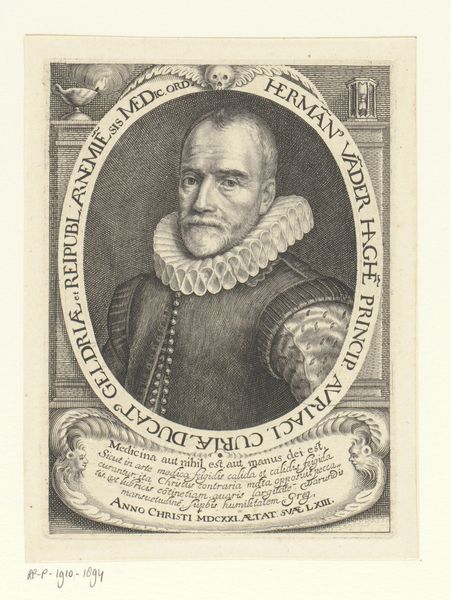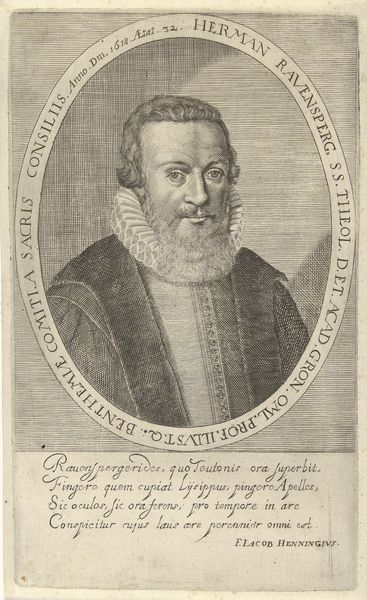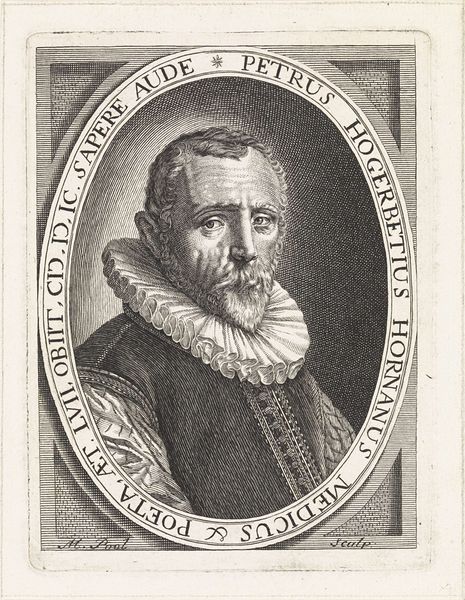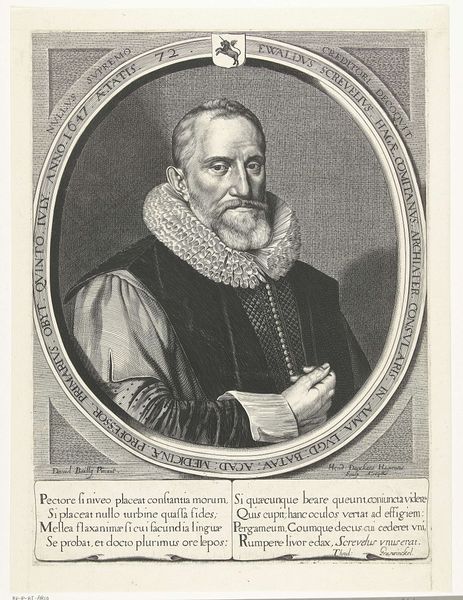
engraving
#
portrait
#
baroque
#
dutch-golden-age
#
caricature
#
history-painting
#
engraving
Dimensions: height 256 mm, width 169 mm
Copyright: Rijks Museum: Open Domain
Curator: Let's consider this engraving, "Portret van Pieter Christiansz. Bor," created by Jacob Matham in 1625. It currently resides in the Rijksmuseum. What are your initial thoughts on its composition and tone? Editor: There's a formality to it, wouldn't you say? The stark lines, the aged face… It speaks of the sitter's social position, his importance conveyed through carefully chosen detail. Curator: Indeed. Note the detail inherent to engraving, how the hatching and cross-hatching create tonal variation. The artist highlights Bor's distinctive ruff and somber attire with striking clarity. These features are vital to consider within the context of the material conditions that supported printmaking as a viable means to disseminate knowledge. Engravings were relatively cheap and prolific at this time; a growing literate middle class made such distribution networks flourish. Editor: Absolutely. The composition, encased within an oval and a rectangular frame, creates an impression of scholarly constraint—heightened, to my eye, by the use of allegorical figures in each corner, which I find almost claustrophobic. Curator: I see what you mean. Matham frames the man, his work and the social dynamics behind disseminating such an image through emblems of time, truth, history, and insight. The accompanying verse reiterates this sentiment, attributing success and historical memory not just to the sitter, but also to the skillful hand of the engraver himself! This creates a network of dependence and shared skill which allows Matham to self-promote and inscribe his name in the wider history of knowledge production. Editor: Well observed. The pen in Bor's hand hints at intellectual pursuit, connecting, then, his materiality to the labor required to complete his great historical writing. It draws your attention not just to Bor himself but towards his purpose. A tangible artifact connecting Bor the man to Bor the symbol of history and intellect. Curator: Precisely. Understanding that this wasn't just about depicting an individual, but about celebrating labor, craftsmanship, printmaking, and the material conditions of historical documentation gives greater nuance to how we may view history and portraits like these, don't you think? Editor: Certainly, by uniting these formal aspects with tangible considerations, we're able to understand how process intersects and adds dimensions to a piece's aesthetic power. A necessary combination, indeed.
Comments
No comments
Be the first to comment and join the conversation on the ultimate creative platform.


